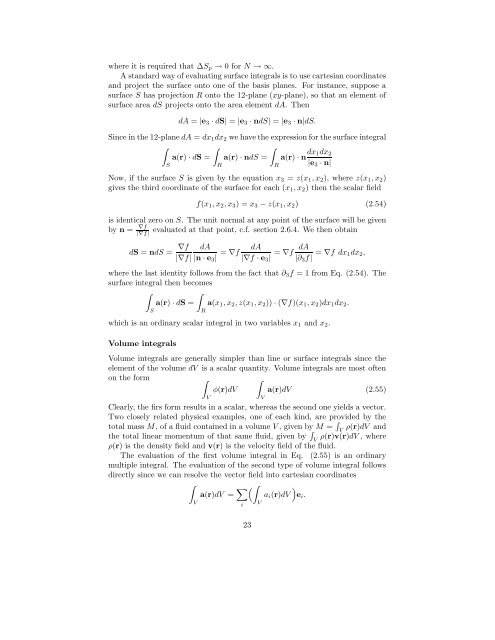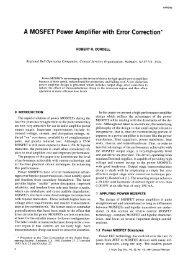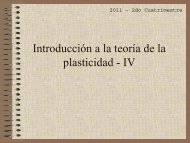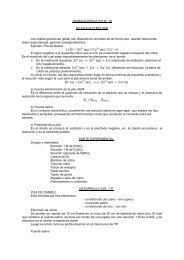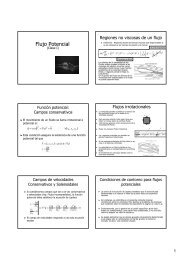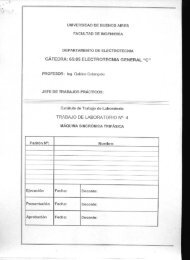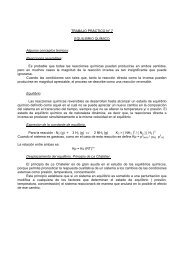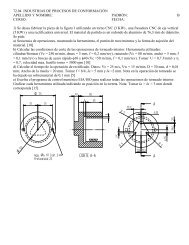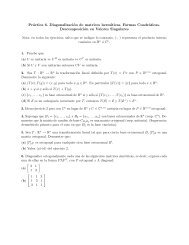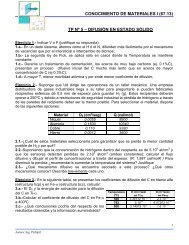Introduction to vector and tensor analysis
Introduction to vector and tensor analysis
Introduction to vector and tensor analysis
Create successful ePaper yourself
Turn your PDF publications into a flip-book with our unique Google optimized e-Paper software.
where it is required that ∆Sp → 0 for N → ∞.<br />
A st<strong>and</strong>ard way of evaluating surface integrals is <strong>to</strong> use cartesian coordinates<br />
<strong>and</strong> project the surface on<strong>to</strong> one of the basis planes. For instance, suppose a<br />
surface S has projection R on<strong>to</strong> the 12-plane (xy-plane), so that an element of<br />
surface area dS projects on<strong>to</strong> the area element dA. Then<br />
dA = |e3 · dS| = |e3 · ndS| = |e3 · n|dS.<br />
Since in the 12-plane dA = dx1dx2 we have the expression for the surface integral<br />
<br />
<br />
a(r) · dS =<br />
<br />
a(r) · ndS = a(r) · n dx1dx2<br />
|e3 · n|<br />
S<br />
R<br />
Now, if the surface S is given by the equation x3 = z(x1, x2), where z(x1, x2)<br />
gives the third coordinate of the surface for each (x1, x2) then the scalar field<br />
R<br />
f(x1, x2, x3) = x3 − z(x1, x2) (2.54)<br />
is identical zero on S. The unit normal at any point of the surface will be given<br />
evaluated at that point, c.f. section 2.6.4. We then obtain<br />
by n = ∇f<br />
|∇f|<br />
dS = ndS = ∇f dA<br />
dA<br />
= ∇f<br />
|∇f| |n · e3| |∇f · e3|<br />
dA<br />
= ∇f = ∇f dx1dx2,<br />
|∂3f|<br />
where the last identity follows from the fact that ∂3f = 1 from Eq. (2.54). The<br />
surface integral then becomes<br />
<br />
<br />
a(r) · dS = a(x1, x2, z(x1, x2)) · (∇f)(x1, x2)dx1dx2.<br />
S<br />
R<br />
which is an ordinary scalar integral in two variables x1 <strong>and</strong> x2.<br />
Volume integrals<br />
Volume integrals are generally simpler than line or surface integrals since the<br />
element of the volume dV is a scalar quantity. Volume integrals are most often<br />
on the form <br />
<br />
φ(r)dV a(r)dV (2.55)<br />
V<br />
Clearly, the firs form results in a scalar, whereas the second one yields a vec<strong>to</strong>r.<br />
Two closely related physical examples, one of each kind, are provided by the<br />
<strong>to</strong>tal mass M, of a fluid contained in a volume V , given by M = <br />
V ρ(r)dV <strong>and</strong><br />
the <strong>to</strong>tal linear momentum of that same fluid, given by <br />
ρ(r)v(r)dV , where<br />
V<br />
ρ(r) is the density field <strong>and</strong> v(r) is the velocity field of the fluid.<br />
The evaluation of the first volume integral in Eq. (2.55) is an ordinary<br />
multiple integral. The evaluation of the second type of volume integral follows<br />
directly since we can resolve the vec<strong>to</strong>r field in<strong>to</strong> cartesian coordinates<br />
<br />
a(r)dV = <br />
<br />
ai(r)dV ei.<br />
V<br />
i<br />
23<br />
V<br />
V


